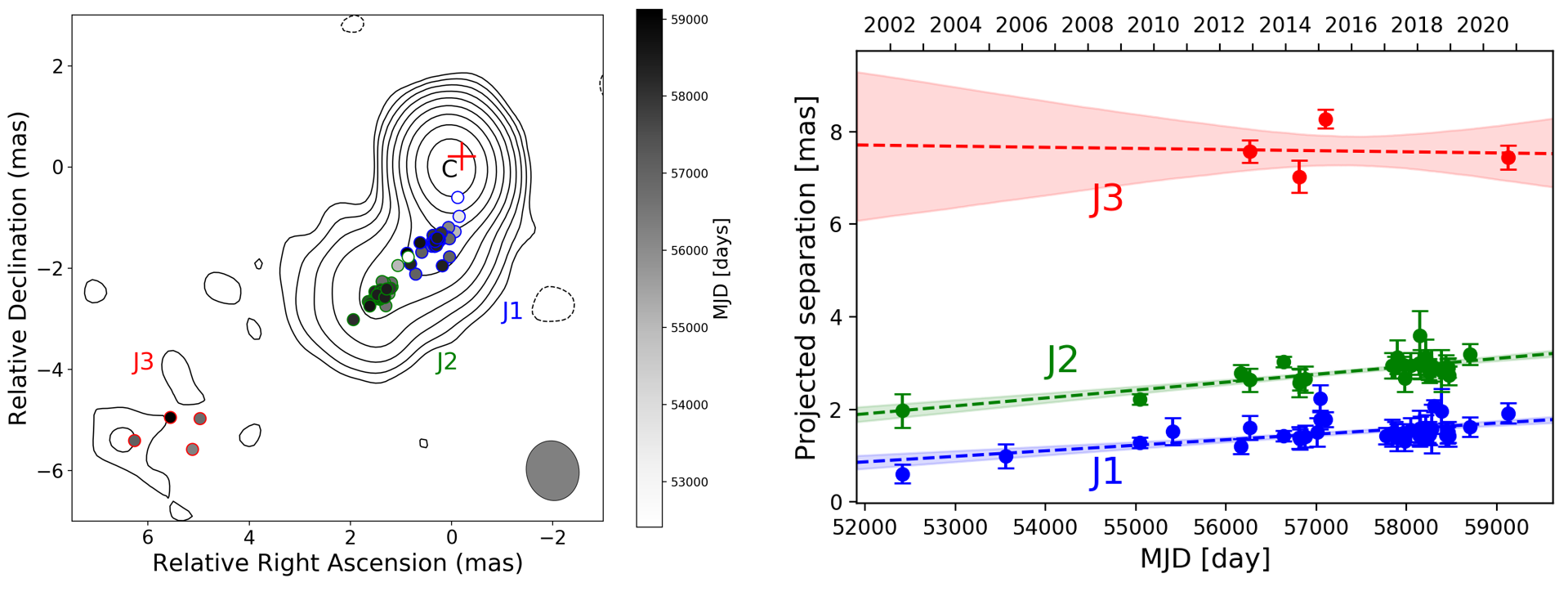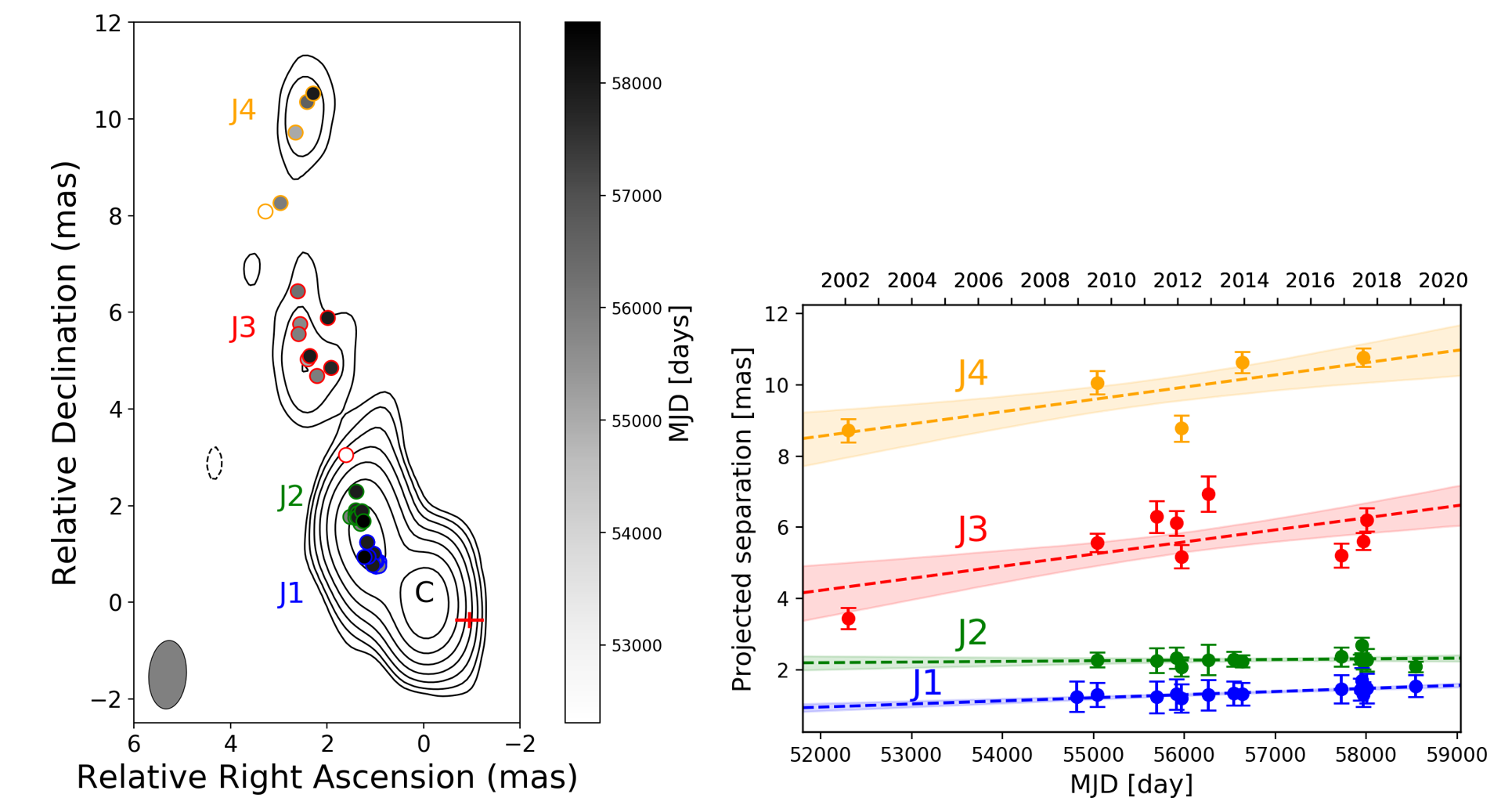
Proper motion of the radio jets in two blazars at redshift above 3
Máté Krezinger
Jet kinematic studies have always been important for understanding the nature of active galactic nuclei (AGN). The technique of very long baseline interferometry (VLBI) provides milliarcsecond-scale resolution (pc scales in linear resolution) at cm wavelengths to trace the radio emission coming from the innermost regions of the jets. With long-term monitoring, the apparent proper motion of the jet components can be directly measured. In contrast to low redshifts, jet proper motion studies at high redshifts are still rare, and usually deal with only a few sources at a time. There are no more than about 20 sources above redshift 3 with jet proper motion analysis available to date. Due to the limited number of ideal core—jet type sources available at z>3, even small incremental increases can help improve the statistical constrains on the nature of jets in the early Universe.
We specifically targeted two flat-spectrum radio quasars, NVSS J080518+614423 (J0805+6144, z=3.033) and NVSS J165844−073918 (J1658−0739, z=3.742), because they are among the brightest blazars at 3 < z < 4 which have compact mas-scale jet structure. Both targets are frequently observed in geodetic and astrometric VLBI sessions and therefore already have multiple epochs of X-band (7.6—8.6-GHz) observations available in the Astrogeo data base (maintained by Leonid Petrov, https://astrogeo.org/vlbi_images/). The time coverage is almost 20 years, corresponding to ~4 years in the rest frame of the sources. The distribution of the measurements is not uniform, the observations are more frequent after 2017. In addition to the archival data, we observed the blazars with the European VLBI Network (EVN) at 8.6 GHz at three different epochs within half a year, from 2018 June to 2019 February (project ET036, PI: O. Titov).
The two sources have typical blazar jet morphologies. The very small optical–radio (Gaia–VLBI) positional offsets are also typical for this type of AGN, with the optical centroid being upstream along the jet. In both cases, multiple components can be identified in the bent jet structure. To derive the apparent proper motions, Gaussian brightness distribution models have been fitted to the visibility data. This way the relative position of the jet components to the core can be determined. We followed 3 jet components for J0800+6144 (Fig. 1) and 4 for J1658-0739 (Fig. 2). Interestingly, we found an apparently stationary component in J1658-0739, which might be caused by a standing recollimation shock, or it is simply a projection effect.


The derived apparent superluminal motions are ranging between about 1 to 14 times the speed of light. The measured values are added to the sparsely-populated high-z end of the apparent proper motion – redshift diagram (e.g. Zhang et al. 2022, ApJ, 937, 19). The derived Lorentz factors and jet viewing angles are also consistent with the blazar nature of the sources and with other radio-loud quasars found at z > 3.
More information: Krezinger et al., 2024
Contact: Máté Krezinger, krezinger.mate@csfk.org